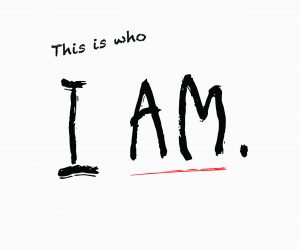Alberta’s new policies are not only anti-trans, they are anti-evidence
This article is republished with thanks to ![]() .
.
To read the original article please click here
What did Alberta Premier Danielle Smith get wrong in her new anti-trans policies? Spoiler alert — everything.
Let’s spend some time fact-checking Smith.
She recently promised a new “parental rights” policy would be introduced by her United Conservative Party government.
Like other experts, we worried these policies would mimic the parental rights legislation recently introduced in Saskatchewan and New Brunswick.
But we grossly underestimated the breadth of the Alberta measures.
Smith has unveiled a suite of policies that directly attack trans and gender-diverse children and youth in Alberta. Spanning health care, education and sports, these policies extend well beyond the expected changes to the use of chosen names and pronouns in schools.
Smith intends to implement the most extensive, draconian and unbalanced proposals of any conservative province to date, all under the guise of “preserving choice” for kids.
As we explain below, these policies are at odds with research about gender-affirming care, curriculum and sports.
As a result of ignoring the evidence, these policies could cause significant harm to the many transgender and non-binary youth who live in Alberta or access gender-affirming care in the province (like youth from the Northwest Territories, for example).
Evidence on trans-affirming care
 Smith’s new policy will forbid access to puberty blockers and hormone therapy for the purpose of gender reassignment or affirmation for youth 15 years of age and under, except for those who have already started those treatments. For youth 17 years and under, top and bottom gender reassignment surgeries are not permitted.
Smith’s new policy will forbid access to puberty blockers and hormone therapy for the purpose of gender reassignment or affirmation for youth 15 years of age and under, except for those who have already started those treatments. For youth 17 years and under, top and bottom gender reassignment surgeries are not permitted.
This particular policy deliberately spreads disinformation — parents are already required to give consent for their pubescent children to receive puberty blockers and for teenagers to access hormone replacement therapy. Bottom surgeries are already restricted to adults.
Puberty blockers slow down the onset of puberty and are often prescribed for cisgender girls who experience puberty before 10 years old.
According to Scientific American, puberty blockers have been studied extensively and have been used safely since the 1980s. Any risks associated with puberty blockers are already included in Standards of Care for transgender patients, and are not being prescribed to pubescent youth without careful consultation.
Like all medicines, side effects are a risk but researchers caution against fear-mongering in response to gender-affirming care.
The evidence about trans-affirming health care for youth is clear — it saves lives. Evidence suggests that puberty blockers lead to positive mental health outcomes and that the biggest benefits of gender-affirming hormone therapy (HRT) are realized when HRT is started at age 14 or 15.
Rather than restrict life-saving medical care, experts in fertility medicine call for increased accessibility for trans people to fertility services.
Sex education evidence
Paralleling Saskatchewan and New Brunswick, Alberta youth 15 and under now require parental consent to use chosen names and pronouns at school. Notification is required for 16- and 17-year-olds to do so.
Classroom instruction on gender, sexuality and sexual orientation also now requires parental notification and opt-in. Finally, third-party resource materials on gender, sexuality and sexual orientation in schools need to be pre-approved by the ministry to make sure they’re “age-appropriate.”
Education experts agree that what is needed to protect youth — including cisgender and heterosexual kids — from potential abuse is robust and consent-based sexual health education. Youth have the right to knowledge and skills about their bodies, consent, safe/unsafe touch and healthy relationships.
By creating conditions that could result in youth receiving no or limited information, Smith has put children and youth at greater risk of violence and harm.
Risk of parental, peer rejection
Requiring parental consent for youth to use their chosen name and pronouns at school could cause irreparable harm. This process essentially requires schools to “out” youth to their parents, who may reject their children.
Smith incorrectly suggests that parental rejection of 2SLGBTQIA+ kids is rare.
According to a Canadian study by The Family Acceptance Project, 30 per cent of families reject their child when they come out, and many are removed from their homes. Among youth who are homeless, 20 per cent identify as 2SLGBTQIA+.
For those who experience family rejection, the rates of suicide are incredibly high. According to the 2015 U.S. Transgender Survey, 79 per cent of those rejected by their families experienced suicidal ideation and 43 per cent have made a suicide attempt.
Trans athletes evidence
 Smith’s policy will also ban trans girls and women athletes from participating in competitive women’s sports. They will be forced to play in gender-neutral or co-ed divisions.
Smith’s policy will also ban trans girls and women athletes from participating in competitive women’s sports. They will be forced to play in gender-neutral or co-ed divisions.
Yet again, Smith hasn’t listened to the experts. Some scientists maintain that trans women and girls have no “biological advantage” over cisgender girls and women.
A book on the topic that reviewed evidence on testosterone determined there is no direct relation between the hormone and athletic performance. It found that while testosterone can be linked to muscle mass and muscle memory, there’s no connection to other capacities like endurance and flexibility.
High levels of athleticism are actually correlated with coaching and specialized training — including access to competitive leagues — not to “biological sex.”
Trans sports participation is vital for health and well-being. That’s why the Canadian Centre for Ethics in Sport recommends “policies governing the participation of trans athletes should be evidence-based.” According to a study published by the Journal of the American Medical Association, youth participation in sport is associated with positive physical, mental and emotional well-being.
Inclusive sports environments — not segregated leagues — are associated with greater self-esteem and school retention.
What’s the truth?
In survey data collected from 2,873 non-binary and trans people in Canada, youth reported high levels of harassment (72 per cent), rejection from family (25 per cent) and suicide ideation (40 per cent).
In contrast, trans youth who are affirmed in schools, health care and in sports have better self-confidence and relationships with their parents.
Smith has incorrectly warned there are risks associated with affirmation and inclusion in schools for trans kids.
What the evidence actually demonstrates is what truly puts trans kids at risk are transphobic, misguided and ill-informed policies and practices that deny them the right to live authentically and to express themselves fully without fear.
Federal cabinet ministers are speaking out against Smith’s proposed restrictions. Ottawa may oppose the policies in court.
In Alberta, Skipping Stone Foundation in Calgary and Egale Canada — advocacy groups for 2SLGBTQI people — have publicly condemned Smith’s policies and have partnered to file a court injunction.
These policies are clearly meant to satisfy Smith’s electoral base, but her government is now going to have to go head-to-head with the experts — and the evidence — in future legal battles.
This is an updated version of a story originally published on Friday, Feb. 2. It includes more information on clinical guidelines for the prescription of puberty blockers for the purposes of gender-affirming care.![]()
Corinne L. Mason, Associate Professor, Women’s and Gender Studies, Mount Royal University and Leah Hamilton, Professor in the Faculty of Business & Communication Studies, Mount Royal University
This article is republished from The Conversation under a Creative Commons license. Read the original article.

